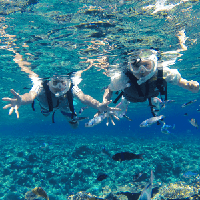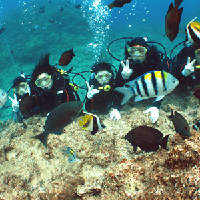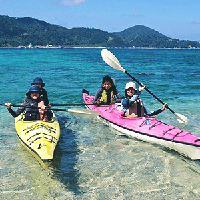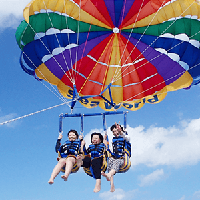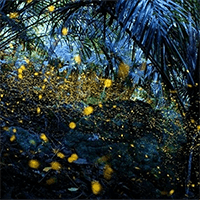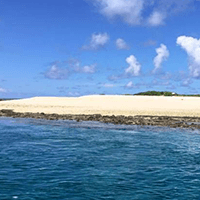Visit temples & shrines in Japan
- Age 6~Age 75
- 3~4 hours
- 09:50
Nokogiriyama is known as a low-profile mountain on the Boso Peninsula. On its southern side is the grounds of Nippon-ji Temple, the imperial temple of Emperor Shomu, which will celebrate its 1,300th anniversary in 2025. This plan is a half-day tour to experience the charms of Nokogiriyama Nippon-ji Temple, starting from JR Yasuda Station, walking along the main approach to the temple and climbing Nokogiriyama from the mountain gate. Once inside the Nippon-ji Temple grounds, you can enjoy the mystical atmosphere of the tallest Buddha statue in Japan (as a seated statue and rock-carved Buddha), as well as the 1,500 arhat statues arranged on the mountainside. Climb the stairs to the top of the mountain, pass by the famous photo spots "Hell Peek" and "Hyakushaku Kannon", and then use the ropeway to return down the mountain.
- Age 0~Age 85
- Over 6 hours on the day
From Sado for the first time to deep Sado. A local sightseeing driver will guide you through Sado's representative sightseeing spots. The beautiful crested ibises and the famous temples that have stood the test of time are both impressive. (*"Meisatsu" is mainly used to mean a famous temple with a long history.) Sightseeing route Ryotsu Port (accommodation) → Toki no Mori Park → Kiyomizu Temple → Hasedera Temple → Daizen Shrine → Myo Senji Temple → Rengebuji Temple → Ogi/Taraibune → Hotel (Ryotsu Port)
- Age 0~Age 85
- Over 6 hours on the day
From Sado for the first time to deep Sado. A local sightseeing driver will guide you through Sado's representative sightseeing spots. Nichiren Shonin, who is celebrating his 800th birthday, traces his hardships on Sado. ★Sightseeing route ★Ryotsu Port (accommodation) → Matsugasaki/Okeyaki → Konponji Temple → Jissoji Temple → Myoshoji Temple → Myosenji Temple → Accommodation (Ryotsu Port)
- Age 10~Age 99
- 1~2 hours
- 20:00
This is a private kagura performance where a small group of 1 to 10 people can enjoy Iwami Kagura, a traditional performing art that has been passed down in the western part of Shimane Prefecture since ancient times, at Ryugozen Shrine in the hot spring town of Yunotsu, Shimane Prefecture. Iwami Kagura is a dance that has been practiced since ancient times in the Iwami region of western Shimane Prefecture, mainly based on Japanese mythology, and is danced to lively music while wearing gorgeous costumes woven with gold and silver threads and expressive masks. It is a traditional performing art that has been passed down. With this plan, you can enjoy a local sake pairing from ``Wakabayashi Sake Brewery,'' a sake brewery in Onsentsu that has been in business for over 100 years, in a private space limited to one group per day and a maximum of 10 people. After the performance, you can also get to know the behind-the-scenes aspects of traditional performing arts, such as interacting with dancers, trying on costumes, playing music, and taking photos. In addition, the ``Kagura Cup,'' the cup into which sake is poured, is handmade by ``Kameya Ceramics,'' a company that manufactures the stone tiles that decorate roofs in the Iwami region, and you can take it home as a souvenir after viewing it. (For customers who prefer non-alcoholic drinks, we use Iwashimizu, Wakabayashi Sake Brewery's brewing water, and also enjoy ``mulberry tea,'' a material used to make Sekishu washi paper used in the production of Kagura masks. *Seasonal) (The tea leaves may change depending on the situation) If you like tradition, history, and theater performances, you can enjoy it regardless of your age or nationality.
- Age 3~Age 100
- 4~5 hours
- 10:00
We have prepared a special program that is limited to one group per day and allows you to enjoy Shizuoka tea with all five senses. The Higashiyama district, which produces tea that has been designated as a World Agricultural Heritage Site, is one of the highest quality tea producing areas in the prefecture, but in recent years there has been an increase in the number of dilapidated tea plantations in this area. In this plan, you will pick tea in a scenic tea plantation that has been renovated from a ruined tea plantation, and you will enjoy the picked tea with tempura or as a kaiseki meal with seasonal local ingredients. Also, as a fun activity before and after your meal, you can work up a sweat by climbing up to the top of Mt. Awagatake, the symbol of the area, for about 30 minutes. From the mountaintop terrace, you can see the large tea garden below, the Oi River, Suruga Bay, and the Izu Peninsula on the horizon. On clear days from autumn to winter, you can even see Mt. Fuji. After your meal, enjoy a sencha ceremony where you can brew delicious tea yourself using a teapot. Local staff and farmers will give you detailed instructions, so please try it at home! ~Procedure of the experience~ ① Gather at Higashiyama Ippukudokoro (10:00) ② Welcome tea and program information at local Higashiyama tea (about 20 minutes) ③ Tea picking experience at a ruined tea plantation halfway up Mt. Awagatake (about 30 minutes) ④ Walk It takes about 30 minutes to hike to the top of the mountain! ... Awa Shrine, Iwaza ... Take a short break at the finish line on the terrace at the top of Mt. Awagatake ... ⑤ It's finally time to eat on the terrace with a spectacular view (about 60 minutes) ⑥ After the meal, enjoy being taught how to brew delicious tea Tea time (approx. 30 minutes) ⑦ Transfer to Higashiyama Ippukudokoro by shuttle car, scheduled to disband around 2:00 p.m.
最近チェックしたプラン
Please wait a moment
![[Tokyo Bay, Nokogiriyama] A guided trekking tour following the 1,300-year history of Nihon-ji Templeの画像](https://img.activityjapan.com/10/56443/10000005644301_AVWlGGNt_3.jpg?version=1727931785)
![[Niigata/Sado] Impressed by Toki, famous temples, and tarai boats! "Watch the crested ibises, see famous temples, and experience a Tarai boat"の画像](https://img.activityjapan.com/10/46105/10000004610501_oQVKDVC2_3.jpg?version=1693547882)
![[Niigata/Sado] Follow the hardships of Nichiren Shonin! "Course to visit the footsteps of Nichiren Shonin" Easy and leisurely by sightseeing taxi♪の画像](https://img.activityjapan.com/10/46102/10000004610201_oQVKDVC2_3.jpg?version=1693547762)
![[Shimane/Onsentsu] Private Iwami Kagura experience limited to 1 group per day - Sake pairing and interaction with dancers at a historic shrineの画像](https://img.activityjapan.com/10/53038/10000005303801_lpXgdgDW_3.jpg?version=1709005575)
![[Shizuoka/Kakegawa] Reserve a special dining experience where you can enjoy the tea leaves you picked yourself while looking at the tea fields! A special moment just for you! Tea plantation restaurant in the skyの画像](https://img.activityjapan.com/10/53175/10000005317501_lpXgdgDW_3.png?version=1709890982)
